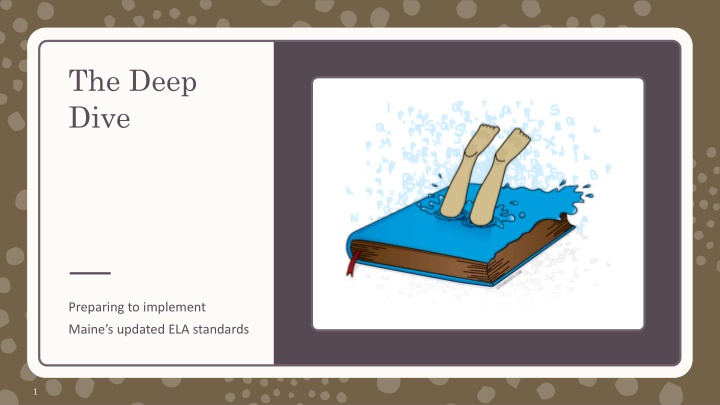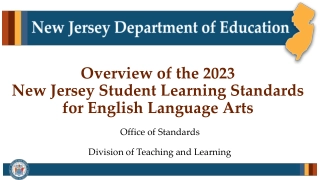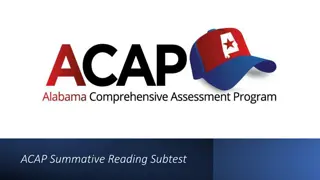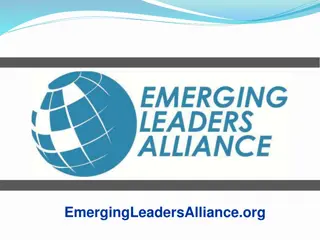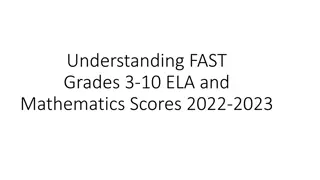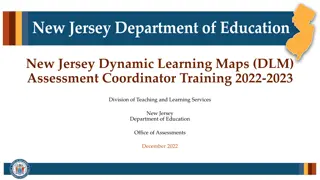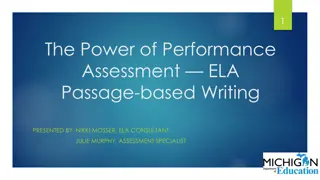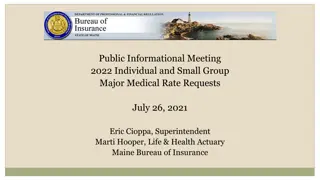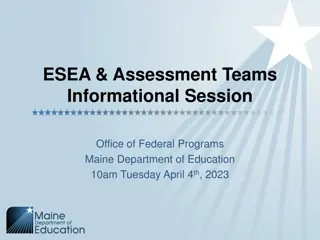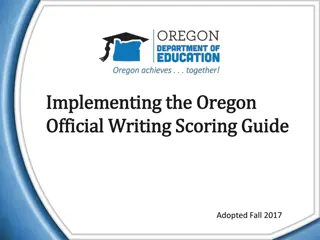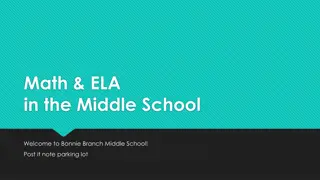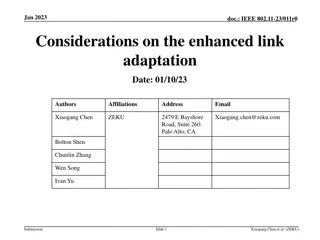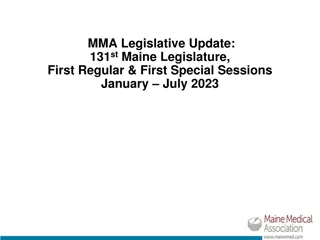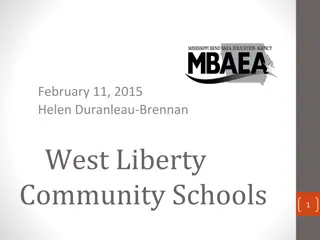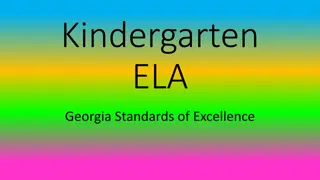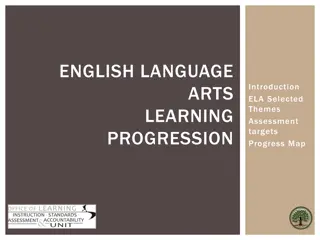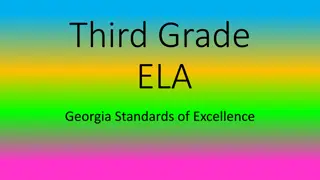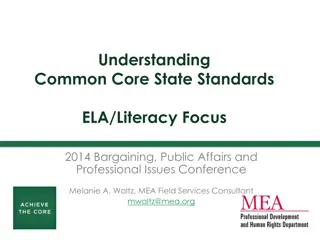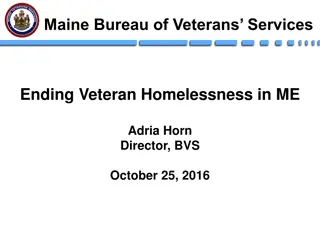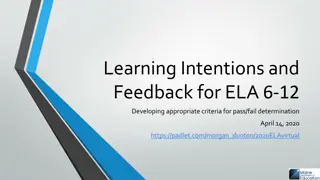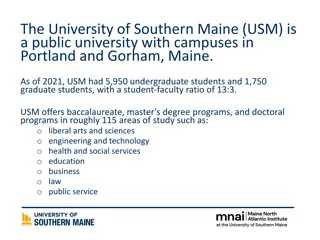Implementing Maine's Updated ELA Standards: A Deep Dive
Prepare to implement Maine's updated ELA standards with gentle shifts and course corrections rather than entirely new routes. Explore guiding principles focusing on communication, transfer of learning, problem-solving, and ethical behavior. Learn to emphasize language rules, vocabulary instruction, and effective communication. Hold students accountable for listening and speaking in collaborative conversations. Dive into the nuances of the standards to drive continuous improvement in literacy skills.
Download Presentation

Please find below an Image/Link to download the presentation.
The content on the website is provided AS IS for your information and personal use only. It may not be sold, licensed, or shared on other websites without obtaining consent from the author.If you encounter any issues during the download, it is possible that the publisher has removed the file from their server.
You are allowed to download the files provided on this website for personal or commercial use, subject to the condition that they are used lawfully. All files are the property of their respective owners.
The content on the website is provided AS IS for your information and personal use only. It may not be sold, licensed, or shared on other websites without obtaining consent from the author.
E N D
Presentation Transcript
The Deep Dive Preparing to implement Maine s updated ELA standards 1
Not NEW 2 Maine s updated ELA standards are the same standards we have been working with for nearly a decade Planning for implementation should involve gentle shifts, course corrections rather than mapping entirely new routes Analysis of updates should reveal opportunities to revise practices The updated standards may stimulate thinking about remote and blended learning practices
3 What to look for: Guiding Principles Communicate in a variety of contexts including interpersonal, small group, large group, in-person, and digital with accuracy and clarity Demonstrate the ability to transfer learning to new contexts with guidance and self-directed, to continuously improve literacy skills Analyze, evaluate, collaborate and plan to solve problems Emphasize the qualities of responsible and ethical behavior when gathering and using information, engaging with others, and presenting ideas Explore multiple perspectives to verify and validate information and ideas
4 What to look for: Language To be a clear and effective communicator, following rules of language use for the context of use is an essential understanding Provide direct instruction of grammar, usage, mechanics, and word development Evaluate language use in mentor texts, growing depth of analysis to reflect elevating complexity of texts Select for instruction vocabulary words that may be familiar in one use, but quite different and unfamiliar in another Teach vocabulary that informs discussion of a topic and appropriate presentation of ideas about a topic or concept
What to look for: Speaking & Listening 5 Hold students accountable for listening during collaborative conversations: consider what is produced during productive talk Provide mentor texts in a variety of media and include close reading practices for text analysis that reflects author s craft Presentation relies on an understanding of task, purpose and audience. Compare SL.3 to W.3. Look for the connected and transferable learning that is necessary for both standards. Adapting speech requires an understanding of the context and can also relate to W.3
What to look for: Reading 6 Foundational skills may inform intervention strategies or areas to focus on close reading as new genres/forms of text are introduced or increasingly complex texts are examined. R.4-6 Key Ideas and Details are essential to W.1 Inquiry R.7-9 Craft and Structure are essential to W.2 and W.3 to develop an understanding of audience and genre norms R.10-11 are essential to SL and writing as both rely on analysis and synthesis of the context and content Fluency is critical to independent transfer of learning in any grade
What to look for: Writing 7 Writing is the culmination of learning in all of the strands Writing rubrics should reflect the unifying elements of other strands i.e. analysis and use of evidence is informed by the SL and R standards; appropriate structures and word use is informed by the L standards Form, the methods of presenting information, and format, the norms for that form, should directly reflect the audience, purpose, and topic
Study the ELA Standards Progression 8 Read each standard K-12 and note the developmental changes Consider need for direct instruction anticipating the next level of development and direct instruction to support the struggling learner https://www.maine.gov/doe/sites/maine.gov.doe/files/inline- files/ELA%20Vertical%20Progressions%202020_0.docx
PAUSE TO REFLECT What are the possibilities? Where do you begin or continue? 9
